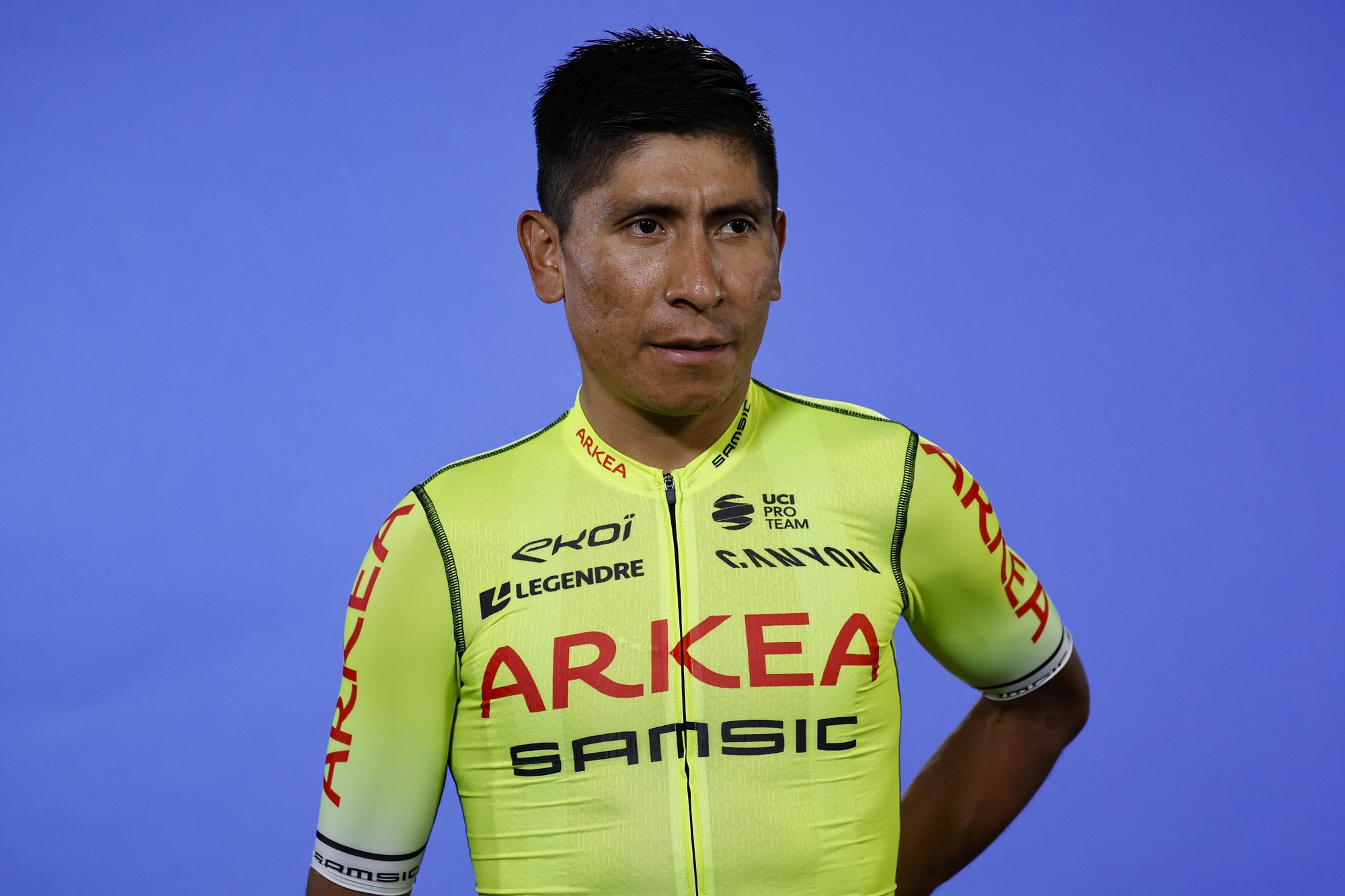Nairo Quintana's lawyer blasts UCI over 'strange' tramadol protocols
'There was no tramadol in his system' says lawyer as appeal is prepared

Nairo Quintana's lawyer has described the Colombian's tramadol case as "very strange", calling the UCI's rules and processes into question as he prepares an appeal.
Quintana was stripped of his sixth place finish in the Tour de France this week, when the UCI announced he had twice tested positive for tramadol, an opioid painkiller that has been banned in cycling since 2019.
It is not a doping case, given the substance is banned on medical grounds and is not prohibited by the World Anti-Doping Agency (WADA). Quintana is not suspended but will has pulled out of the Vuelta a España in order to fight to recover his results from the Tour in a process that could also influence his future at the Arkéa-Samsic team.
Quintana and his representatives have enlisted the services of Colombian sports lawyer Andrés Charria, famous for overturning the case against track cyclist María Luisa Calle in 2004 that saw the International Olympic Committee strip her bronze medal from the Athens Games and later hand it back.
"The truth is, it's a very strange process. What's happening with Nairo is something new, that the UCI has concocted," Charria said on Colombia's Blu Radio this weekend.
"This is not doping, but it appears like doping," he added. "It's important to ask what the UCI is looking for, because if it's about health, that's a fundamental pillar of WADA, and if WADA doesn't consider it [tramadol] harmful on health grounds... it's complicated."
Charria called into question almost every aspect of the UCI's tramadol ban, right down to the "absurdity" of having to pay for the costs of the test.
Get The Leadout Newsletter
The latest race content, interviews, features, reviews and expert buying guides, direct to your inbox!
"There is a badly made rule, a strange sample collection, a laboratory that isn't accredited..." he said.
According to UCI regulations, tramadol tests are carried out on certain riders at the finish of certain races using the 'Dried Blood Spots' method taking using a finger-prick device. Analysis is conducted 'independently' at a laboratory at Geneva University, using a peer review method to detect the amount of tramadol and its two main metabolites. Results are submitted to the University of Lausanne’s Anti-Doping Sciences department for review before being delivered to the UCI medical director.
"The sample wasn't analysed in a WADA-accredited lab," said Charria. "OK, I know it's not a doping case, but they have access to the WADA lab, so why not use it?
"We don't know where the sample was stored, there is no B-sample... it's strange. I'm sure the process itself is reliable, but who carries it out, how they carry it out - all that is not so clear.
"These are protocols the UCI has concocted. The UCI may be good at organising the sport of cycling but I'm not sure it's very good at carrying out hard research or making protocols for a substance."
The defence
Charria also took issue with the fact there is only a 10-day window in which to appeal the ruling in front of the Court of Arbitration for Sport (CAS).
"You usually have 21 days to appeal to CAS so it's very strange that we only have 10," he said. "We're going to have an accelerated process and a lot will depend on the panel that hears it.
"They are disregarding someone's basic rights," he added. "They did not notify him, they did not ask for his defence. The rule states they have to hear him out."
The UCI regulations in fact state that it "may" invite the rider to provide an explanation.
Asked if he felt there was a conspiracy at work, Charria responded: "No. I don't believe in conspiracies or witch hunts. But it's very strange."
Charria drew a potential parallel with the Calle case, in which the finding of Heptaminol in a urine sample was argued to be a result not of taking that very substance, but of it appearing as a metabolised marker of Isometheptene. The case hinged on the legality of the latter substance and WADA's wording of it as a 'similar' substance to Heptaminol, with CAS ruling in favour of the rider, who was later banned for a separate doping offence.
The case could provide a clue as to Quintana's defence. Although the UCI regulations state that "the mere presence of tramadol or its metabolites is sufficient to establish an infringement", Chiarra is set to test that to the limit as he looks for possible explanations that those metabolites could have been produced by other - legal - substances.
"Nairo assures me - and I believe him - that he did not consume tramadol," Charria said.
"We have to do some analysis to see what happened. There was no tramadol in Nairo's system. We need to find a pharmacologist who can say what might have happened."
Patrick is a freelance sports writer and editor. He’s an NCTJ-accredited journalist with a bachelor’s degree in modern languages (French and Spanish). Patrick worked full-time at Cyclingnews for eight years between 2015 and 2023, latterly as Deputy Editor.
